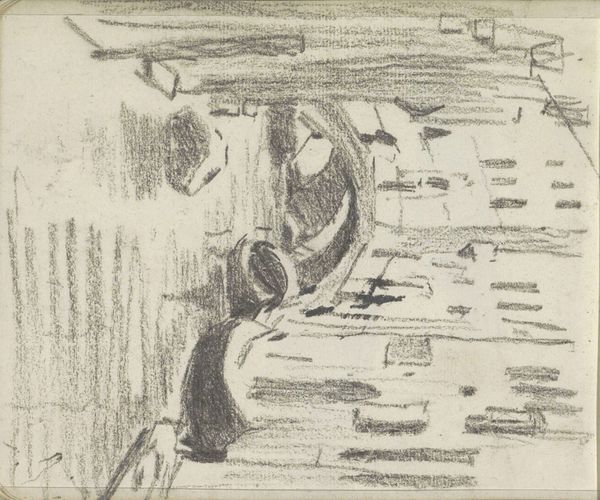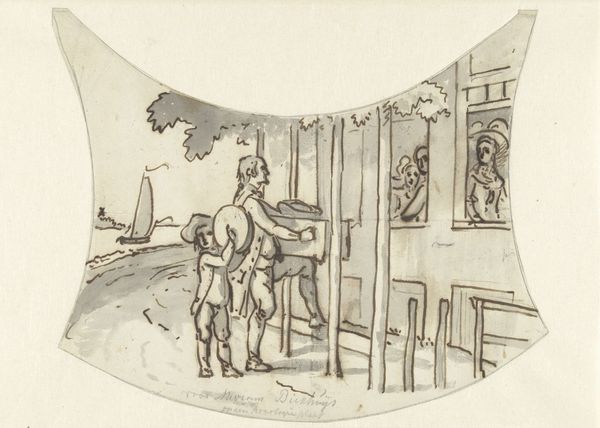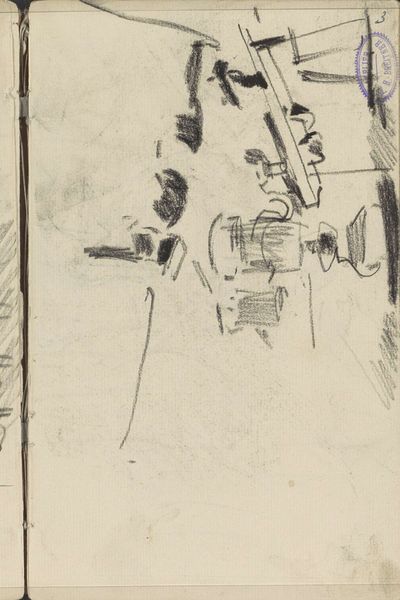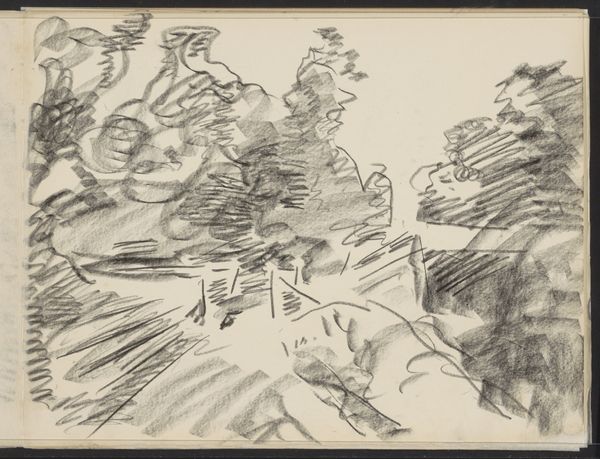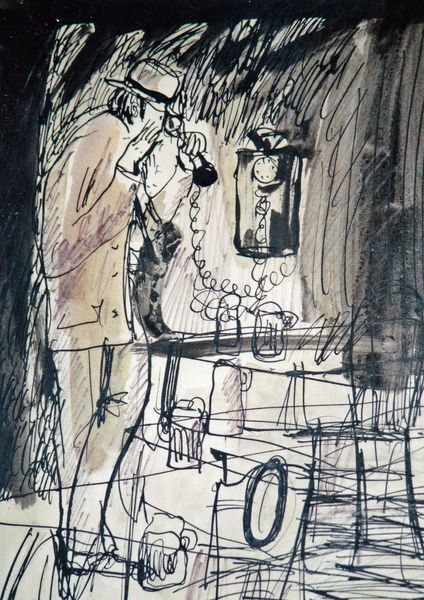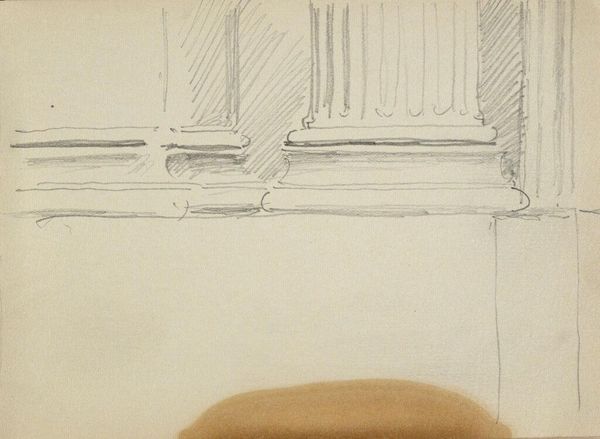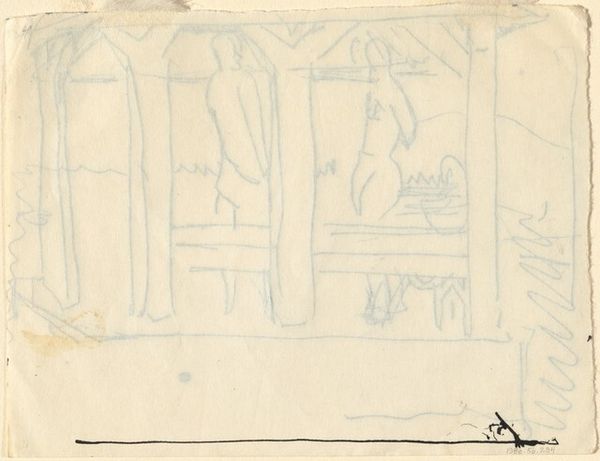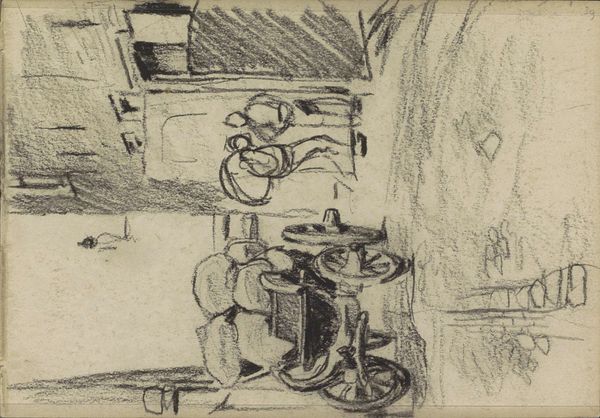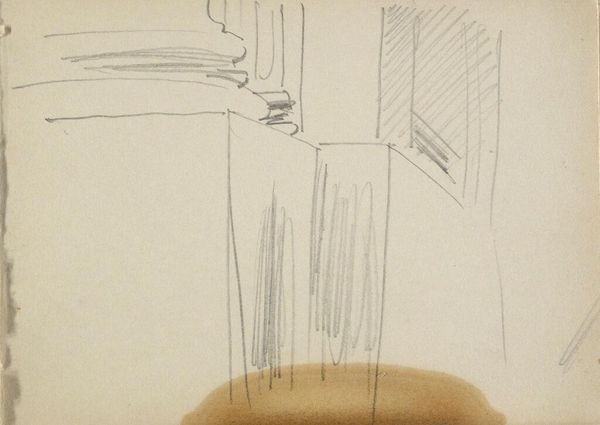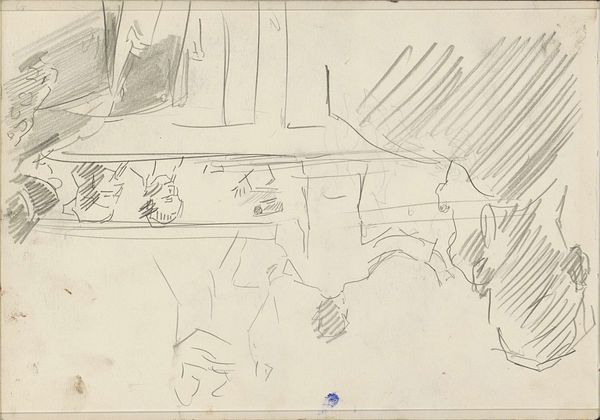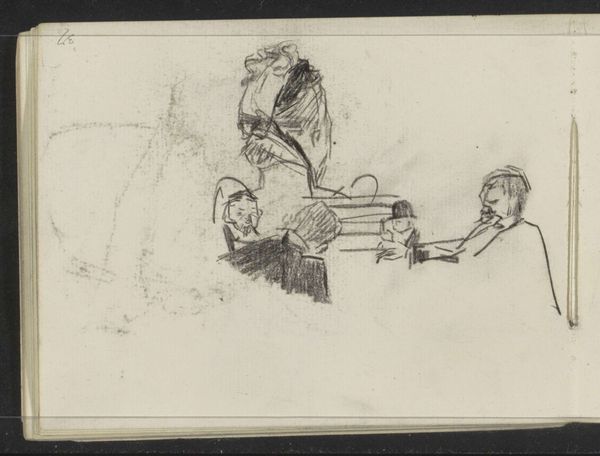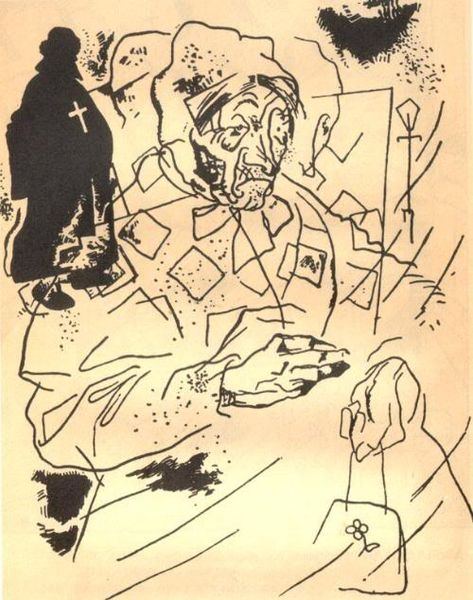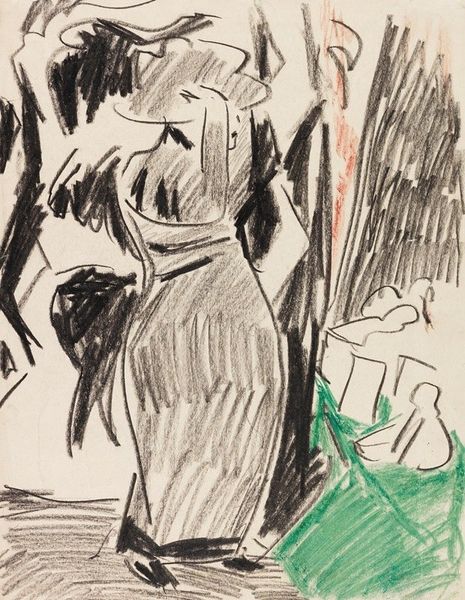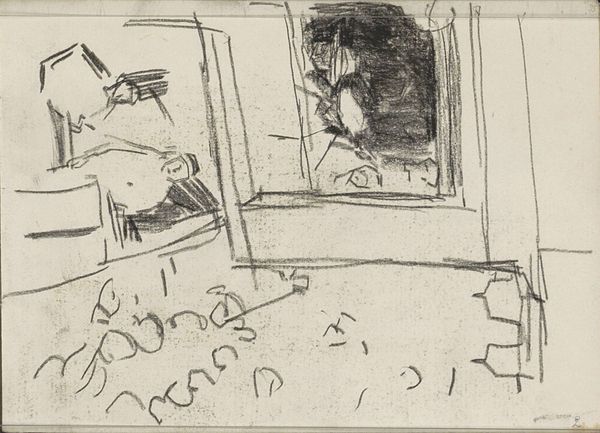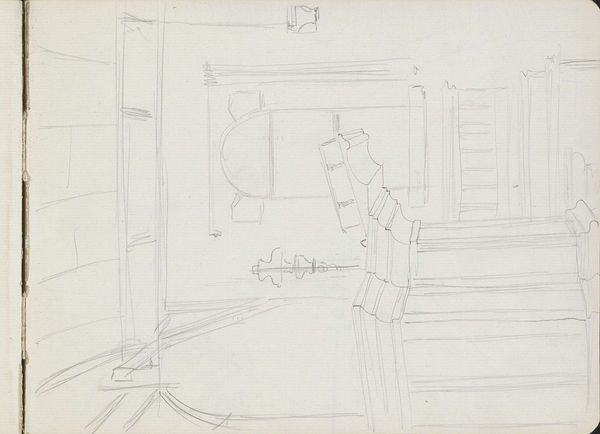
Washington, D.C., Mrs. Ella Watson, a Government Charwoman c. 1942 - 1969
0:00
0:00
photography
#
portrait
#
black and white photography
#
social-realism
#
street-photography
#
photography
#
black and white
#
monochrome photography
#
genre-painting
#
monochrome
Dimensions: image: 26.2 × 33.8 cm (10 5/16 × 13 5/16 in.)
Copyright: National Gallery of Art: CC0 1.0
Curator: Gordon Parks captured this evocative portrait of Mrs. Ella Watson, a government charwoman in Washington D.C., sometime between 1942 and 1969. Editor: It’s a very still, very formal composition despite its documentary feel. The black and white tonality heightens the solemnity. There's a powerful stillness, and something about the framing feels very deliberate. Curator: Absolutely. Parks uses the domestic space and the religious iconography so deliberately. The mirror reflecting a rosary, the statuettes of saints, the lit candles – these aren't accidental details. They signify resilience, faith, a connection to something larger than her immediate circumstances. We can also view it as the cultural memory embedded into the work as a representation of faith that withstands. Editor: The repetition of vertical forms—the candles, the statues, even the streetlight visible through the window—creates a rhythm, a sense of enduring presence. There's a certain austerity, emphasized by the limited tonal range. He makes extensive use of framing too, note the nested compositions from the dresser to the mirror and the doorway to frame Watson's pensive reflection in the glass. Curator: Right, and the window as a frame is significant. She’s positioned on the interior, surrounded by symbols of hope and devotion, yet her gaze is directed outward, toward the city and the world beyond. It makes me think about her desires to extend into something more, or if the world at large reflects some sense of interiority or comfort. Editor: Precisely. And there is an undeniable social-realist quality to the work. Parks’s skill lies in balancing the aesthetic construction with the raw honesty of his subject's life. It prompts us to question not just the visual elements but the social conditions they imply. Curator: I agree. The way he's woven the personal with the political, the sacred with the everyday is a feat to consider as well. It’s an important example of social commentary in documentary photography that is quite enduring. Editor: It's precisely the balance of formal composition and poignant subject matter that makes it unforgettable.
Comments
No comments
Be the first to comment and join the conversation on the ultimate creative platform.
